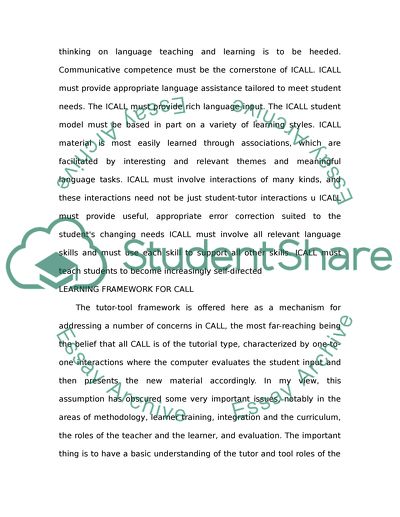Cite this document
(“Computer Assisted Language Learning Essay Example | Topics and Well Written Essays - 3000 words”, n.d.)
Retrieved de https://studentshare.org/education/1511337-computer-assisted-language-learning
Retrieved de https://studentshare.org/education/1511337-computer-assisted-language-learning
(Computer Assisted Language Learning Essay Example | Topics and Well Written Essays - 3000 Words)
https://studentshare.org/education/1511337-computer-assisted-language-learning.
https://studentshare.org/education/1511337-computer-assisted-language-learning.
“Computer Assisted Language Learning Essay Example | Topics and Well Written Essays - 3000 Words”, n.d. https://studentshare.org/education/1511337-computer-assisted-language-learning.


